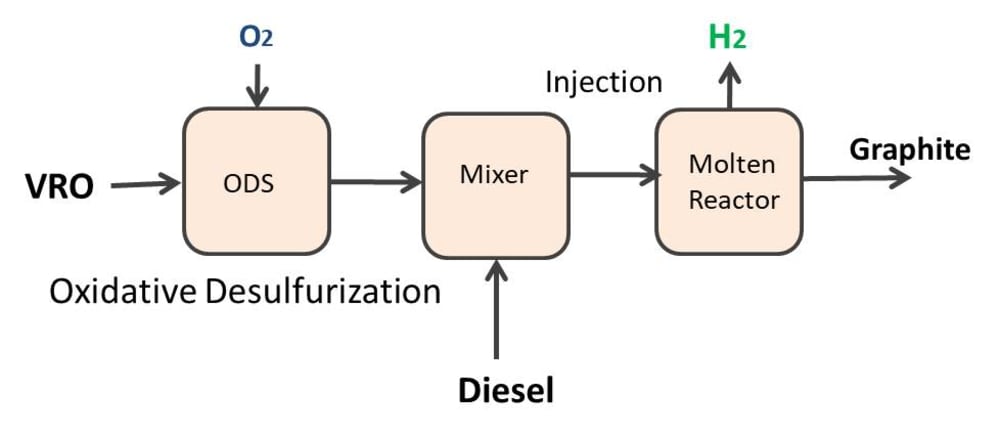Molten Metal Reactor Technology – Prospects in Sustainable Hydrogen Production
Globally, Hydrogen (H2) has been consumed for a variety of purposes, majorly as a feedstock or raw material and for the refining process. However, recently, H2 has been widely promoted by the international energy agency (IEA) as an energy carrier to become an alternative to fossil fuel-based hydrocarbons. Demand for H2 as a fuel is expected to grow exponentially in the upcoming years.
Industrially 96% H2 is produced via the steam methane reforming process (SMR). Methane is treated with steam to produce H2 or Syngas. However, along with CO and H2, significant amounts of CO2 (830MT worldwide) are released into the environment.
Alternatively, there are recent advancements in improving the efficiency of alkaline water electrolysis to produce clean H2. However, it is 3-5 times expensive with the current economy of renewable energy sources and is expected to get cheaper in the future.
A new alternative, molten metal reactor technology, is proposed. Here, a reactor is filled with active molten metal alloy; for eg, Cu & Bi of definite proportions. When methane is sent to the reactor, the liquid metal alloy catalyzes the methane decomposition into H2 and solid C. Molecular dynamic simulations indicate an overall positive bade charge is introduced in the melt phase, catalyzing the process. If the conductive heating comes from renewable sources, then Green H2 is produced.
This technology can be applied not only just to methane but also to liquid hydrocarbon fuels. Preheated fuel diluted with N2 is sent to the reactor bottom. Gas bubbles are formed in the column; moves up, expanding their size due to H2 formation and pressure gradient. Along with H2, solid C particles are generated, moves up due to buoyancy, and stays afloat at the top. H2 is collected at the top and sent to the gas analyzer. Spectroscopic studies indicate Solid C is graphite in nature and hence valuable in the market.
For higher hydrocarbon input, several stages of pyrolysis occur inside the column. H2 and C are the major products, along with some unreacted methane and benzene. A modeling study of the same is submitted in the journal [1]. There are high prospects in Vaccum residual oil treatment (VRO: Cheaper 3,5X than natural gas; Process block diagram included in the illustration).
This technology is viable not just for pyrolysis but also for SMR process, producing Syngas. Also, by doing some adjustments, Waste plastics (LDPE, PP, HDPE) can be treated in the same way to produce H2. Here, Diesel fuel is mixed at the input to reduce the viscosity of liquid plastic.
To summarize, the molten metal reactor has great potential in fulfilling the H2 global demand economy sustainably.
(https://www.youtube.com/watch?v=2dJzT--7mVg&ab_channel=FabiyanAS).
[1] Fabiyan Angikath, Faseeh KK, Muralikrishna, Mani Sarathy, “Hydrogen evolution from hydrocarbon pyrolysis in a simulated liquid metal bubble reactor”,ef-2021-01880a, Energy & Fuels, 2021
Video
Like this entry?
-
About the Entrant
- Name:Fabiyan Angikath
- Type of entry:individual
- Patent status:none





